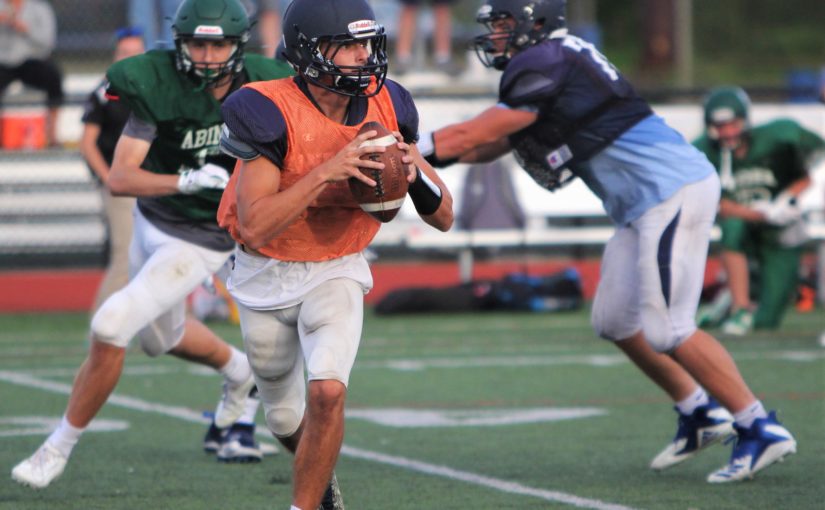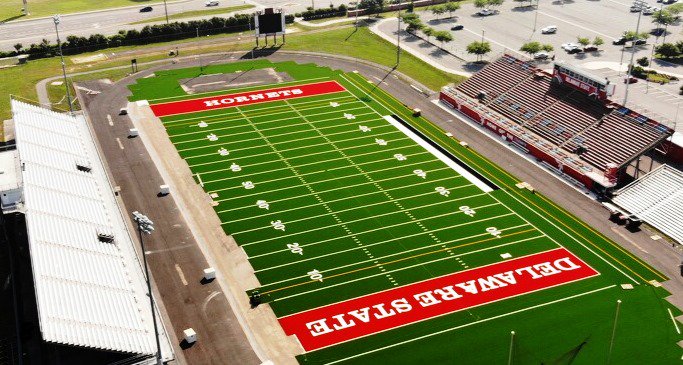Small Game, Big Results: Eight-Man Football Adds Alternative for Small Schools
In some parts of the U.S., the only variation of football besides the traditional 11-on-11 tackle football is flag football. But sprinkled in throughout the country are schools with nine, eight, or even six-man football. These types of programs are offered at schools with student bodies that aren’t big enough to safely support a regular 11-man team.
While each variation of football has seen growth over the years, none may be greater than eight-man football.

As the number of schools offering eight-man football has grown, programs have seen some impressive athletes take the field. Some have not only gone on to play at the next level but also thrived.
Before his brief career as a linebacker for the Detroit Lions, the University of Oklahoma got three strong seasons out of Ronnell Lewis — who spent his high school days playing for Been in Dewar. Before he became a starter in the NFL, which was preceded by a three-year career at Boise State, Dallas Cowboys linebacker Leighton Vander Esch played eight-man football for Salmon River High School. Former NFL running back and 1994 Heisman Trophy winner Rashaan Salaam was also an eight-man football program product.
“I’ll never forget when (former Oklahoma head coach) Bob Stoops and (then-Oklahoma assistant coach) Brent Venables, who’s now the defensive coordinator at Clemson, came down and recruited Ronnell, they flew their little plane into a little bitty ole airport up the road here and came and saw us,” Been said. “The words out of their mouth were: Listen, if a guy can play, if a guy can play, we don’t care what kind of football he plays. If he can play, he can play.
“That’s been my message because one of the things that happens with small schools in general, but especially with eight-man schools when you get good players, schools have a hard time keeping them,” he continued. “We’ve been able to keep a lot of our kids here because of the success we have as a program. But, a lot of our-size schools that have kids who can play at high levels, especially future collegiate athletes, they have a hard time keeping them because people get in their ears and they say, ‘Hey, you’re not ever going to get a look.’”
In terms of progressing to the next level, non-11-man football presents defensive players with a challenge at the high school level that 11-man players don’t get — making their transition to college easier.
“I take a defensive kid who played eight-man football over a defensive kid who played 11-man football any day of the week,” Ryan Hasselstrom, head coach of Prairie (ID) Jr./Sr. High School’s eight-man football program, said. “Because (the eight-man defender) has got so much more ground to cover.
“A linebacker in 11-man has his own area to cover, a six-yard by six-yard area or something. Where, in eight-man football, you get a linebacker who might have to cover from midfield all the way to the sideline — like a 20-yard area he’s got to be able to cover. (Eight-man football defenders) are also a little better at open-field tackling because they have to do more of that kind of stuff.”
Aside from helping players deal with that feeling of being on an island on the defensive side of the ball, coaching eight-man football versus 11-man are very similar.
» ALSO SEE: A.D.ministration — Becoming More Efficient
“You only have five guys on the line of scrimmage and lose one backfield player, but (eight-man football) is just more wide open,” Hasselstrom said. “There’s not as much of a difference as a coach. Some coaches try to make it a lot different. They look at it like Arena Football and do all kinds of crazy, wild stuff. But we stick to a lot of I-Formation and Twins Formation. We pound the ball and do, basically, everything you would do in 11-man.”
Still, to the average high school football fan, anything that’s non-traditional 11-man football can seem foreign. It’s a problem Been faced at Dewar — which was an 11-man program back when he suited up for the Dragons.
“In the beginning, people that were my age that played here and played 11-man just couldn’t understand why we had to play eight-man instead of 11-man,” he said. “But the truth is, and I tell people this all the time, if we have 23 kids on an eight-man football roster, then you take a couple academic issues plus a couple injuries, and pretty soon you’re down to 16-18 kids. If you’re playing 11-man football, you don’t have enough guys to go out there and lineup guys at practice to show them where people are going to be week-to-week. With 23 or 24 players, we have enough for three teams. We can take 10 kids to a JV game on a Tuesday night after the junior high game to get those guys some experience. There are a lot of advantages.
“Most of the schools in our county are bigger, and they come to watch us. They’re like, ‘Man coach, you got some talented kids.’ I feel like kid-for-kid, if we had to put 11 guys on the field, I feel like we could play with most people in our area. When you start running into depth and being able to rotate guys and all of that, (the numbers) would become a big factor. I think that’s the big advantage of playing eight-man football.”





